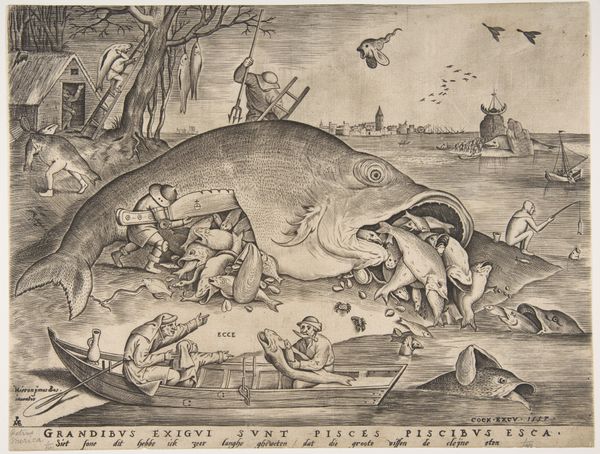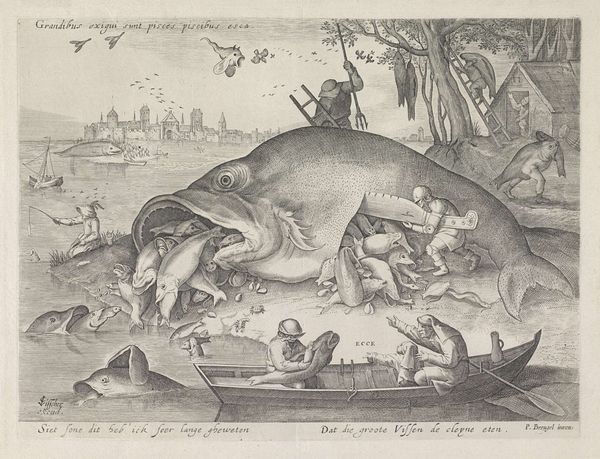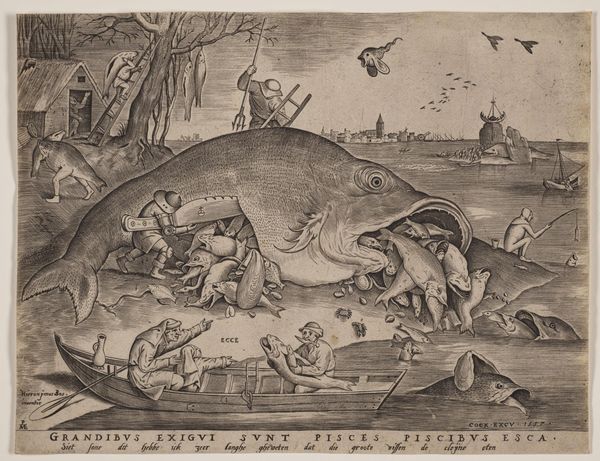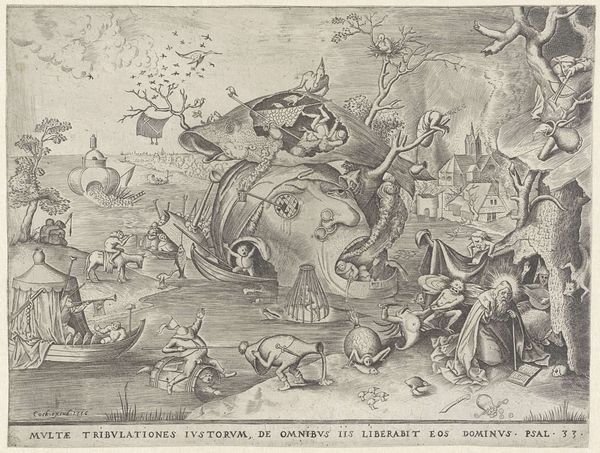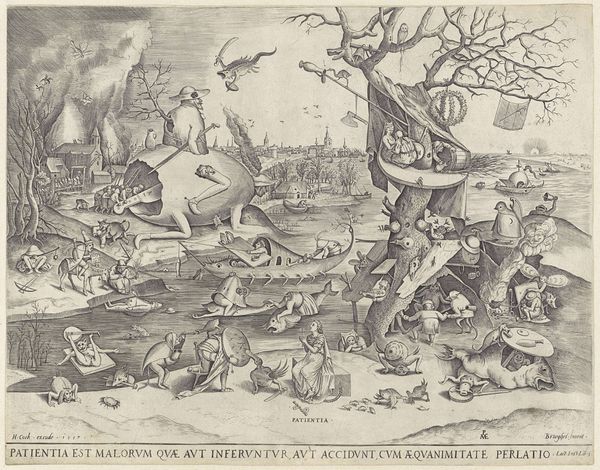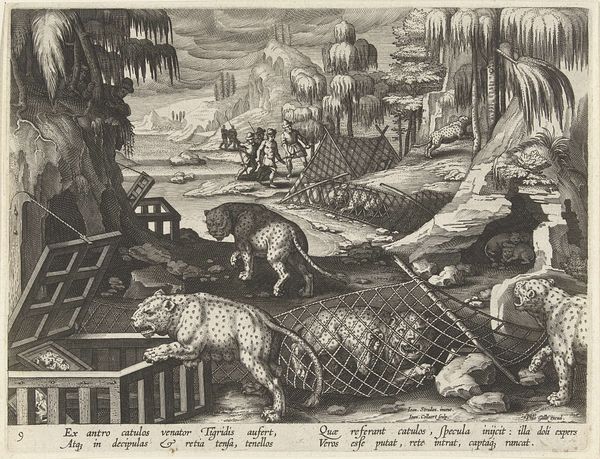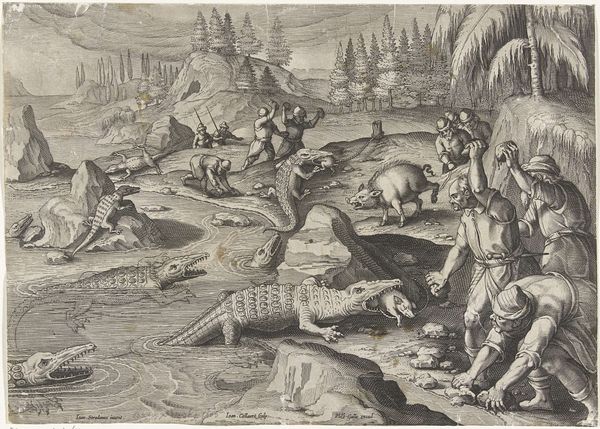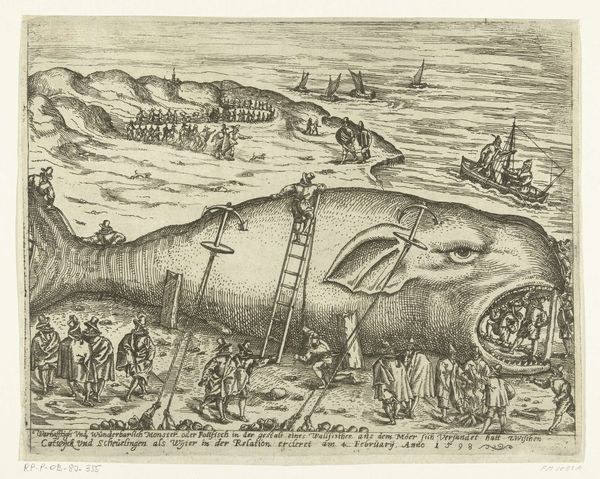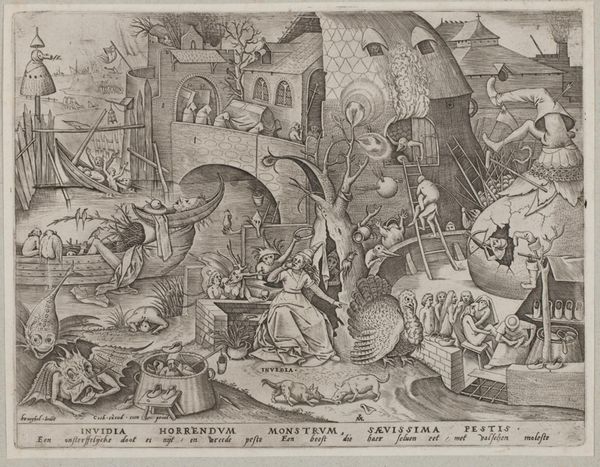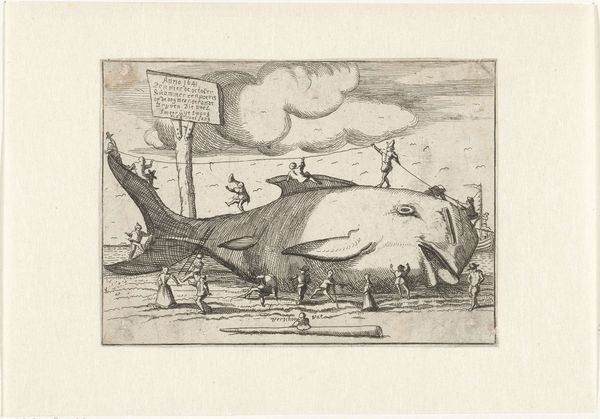
De grote vissen eten de kleine vissen, spotprent op de val van Johan van Oldenbarnevelt, 1619 1619
0:00
0:00
print, engraving
#
narrative-art
#
baroque
# print
#
figuration
#
engraving
Dimensions: height 248 mm, width 318 mm
Copyright: Rijks Museum: Open Domain
Curator: This print, "The Big Fish Eat the Little Fish," was created in 1619 as a satirical commentary on the downfall of Johan van Oldenbarnevelt. The artwork is unsigned and is an engraving. Its current home is here at the Rijksmuseum. Editor: Wow, it's like a bizarre aquatic food chain gone completely wild! I'm immediately drawn to that enormous, monstrous fish in the center devouring everything in sight. Gives me a kind of dark, absurdist fairy-tale vibe. Curator: It’s Baroque in its excess, isn't it? Consider how this print functions as political propaganda, reflecting the turbulent period in Dutch history, steeped in power struggles. The imagery is incredibly pointed – with "Barneveldtische Monster" scrawled onto the giant fish itself. We should contextualize its meaning for our contemporary audience. How do systems of power still function this way today? Who are the little fish getting eaten right now? Editor: Exactly! Art with teeth. I can't help but wonder what that artist, whose name is lost to history, was truly feeling. Pure rage, maybe? Or some kind of cynical amusement, given all the tiny details sprinkled around like little, inky jokes? The poor small fish are being gobbled up, even those hauled up in a fisherman's net in a small boat down below! The monstrous fish, the monster that is labelled Barneveldt himself, casts an overwhelming shadow. The fish’s monstrous, mechanical hand looks ready to swallow everyone. Curator: It's potent visual rhetoric, crafted to shape public perception of Oldenbarnevelt. The artist uses scale, allegory, and visual cues to amplify the critique. How would feminist theory understand this depiction? What of post-colonial theory, considering the global stage and how systems perpetuate injustices? What narrative is not present? We must offer multiple perspectives, not simply assume that it encapsulates any objective truth. Editor: Absolutely. These old images spark questions as well. Thinking about power structures and being swallowed whole like one of these little fish makes you realize… things might look different now, but the undercurrent is eerily the same. Curator: It does encourage us to reconsider, in whose interests do dominant discourses continue, who is granted the agency to tell these narratives, and who profits most from their reach? Editor: A seriously relevant antique, wouldn't you agree? Definitely makes me think twice before jumping into the pond, haha!
Comments
No comments
Be the first to comment and join the conversation on the ultimate creative platform.
